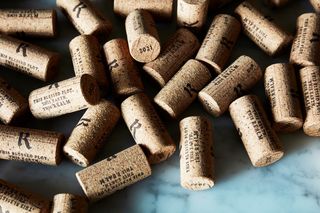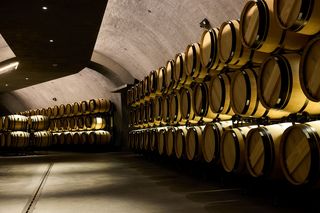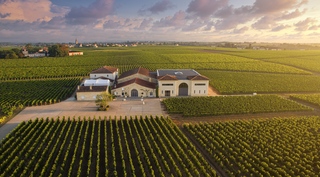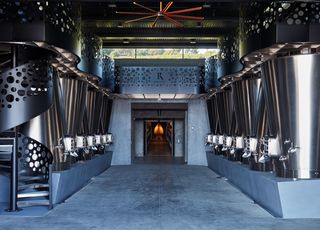It’s one of the final steps in the winegrowing process: putting a cork in the bottle. Although other closures are available, including screwcaps, glass stoppers and even synthetic corks, natural cork has been the closure of choice in the wine industry for centuries. Harvested from the bark of cork trees, cork is a natural, renewable and sustainable resource. The trees themselves – which must be at least 43 years old before harvesting for wine corks – are excellent carbon sequesters. Cork also lasts a long time – think of cork flooring and Birkenstocks! And as early winemakers discovered, cork doesn’t degrade when it comes into contact with wine and has an elasticity that allows it to compress and rebound, making for a nice, tight seal.
But as winemakers and wine drinkers know – and as worldwide demand for corks has grown – the very nature of natural cork means there is variation. The traditional production method, which essentially punches whole corks out of the harvestd bark (think of a paper hole punch), can result in inconsistencies.
Benoit: “Corks produced in the traditional way can introduce unwanted variations in the wine. The most infamous is TCA (2,4,6-trichloroanisole), the compound that can cause musty, basement-like aromas and flavors in wine.”
Enter the technical cork. For Realm, the introduction began with white Burgundy. Both Scott and Benoit, who drink their fair share of the wines, noticed that many of the Grand Cru and Premier Cru bottles they opened were sealed with a different type of cork, one made by the French company, Diam. It got them to thinking.
Scott: “Burgundy is a place that’s pretty set in its ways, for good reason. So when we saw producers using Diam corks on their finest wines instead of traditional corks, we started doing some research.”
Technical corks, those made by Diam as well as Amorim, are made with natural cork from trees, but the processing is completely different. Rather than punching out the cork from the bark, these producers wash and grind the cork and use proprietary techniques to extract compounds that cause sensory deviations, including TCA. The clean, uniform cork granules are then reconstructed using a binding agent – castor oil, beeswax or, with Amorim corks, grapeseed oil – to mold the corks one by one. The result is “micro granulated” corks that have a high level of sensory neutrality as well as consistency from one closure to the next.
Realm bottled its 2020 Fidelio and 2020 La Fe Rosé with Diam technical corks, and we’re pleased with the way they’ve performed. We’ll expand the use of technical corks with other wines in the portfolio, including The Bard and The Tempest, beginning with the 2021 vintage. It’s possible we will expand technical corks to the rest of the portfolio over time. But we recognize changes like this are best made through careful, considered steps. Ultimately, we want the best closure for wines that might age for ten, twenty, thirty or more years.
Recently we began an experimental trial with a natural cork developed by Amorim, with whom we have closely partnered for many years. Amorim is a fascinating company, family-owned for over 150 years and the supplier of over six billion corks annually worldwide. Because of its size and longevity, it pours more dollars into research and development than any other cork producer. Its commitment to sustainability is also impressive. Not only does Amorim collect unused and recycled corks, grinding them up to create yoga mats and other products, but the company sucks up the dust created when grinding cork and turns it into biomass which fuels 65% of its production facility in Portugal.
So when Amorim told Scott and Benoit about a new natural cork product encased in beeswax to protect wine against variability and negative aromas – a product they’d tested in Europe with positive results -- we were interested. Knowing of Amorim’s deep technical knowledge and willingness to partner with us on research and development, we decided to do trials on the product ourselves. Recently we sealed 500 bottles with this cork, with the intention of opening them systematically over the next decade to compare how the trial bottles age compared to controls. We’ll report back on our findings. In the meantime, we will continue to use both technical and natural corks. And we will continue to observe, study and think about the closures that best ensure our wines will drink well in the years and decades ahead.




